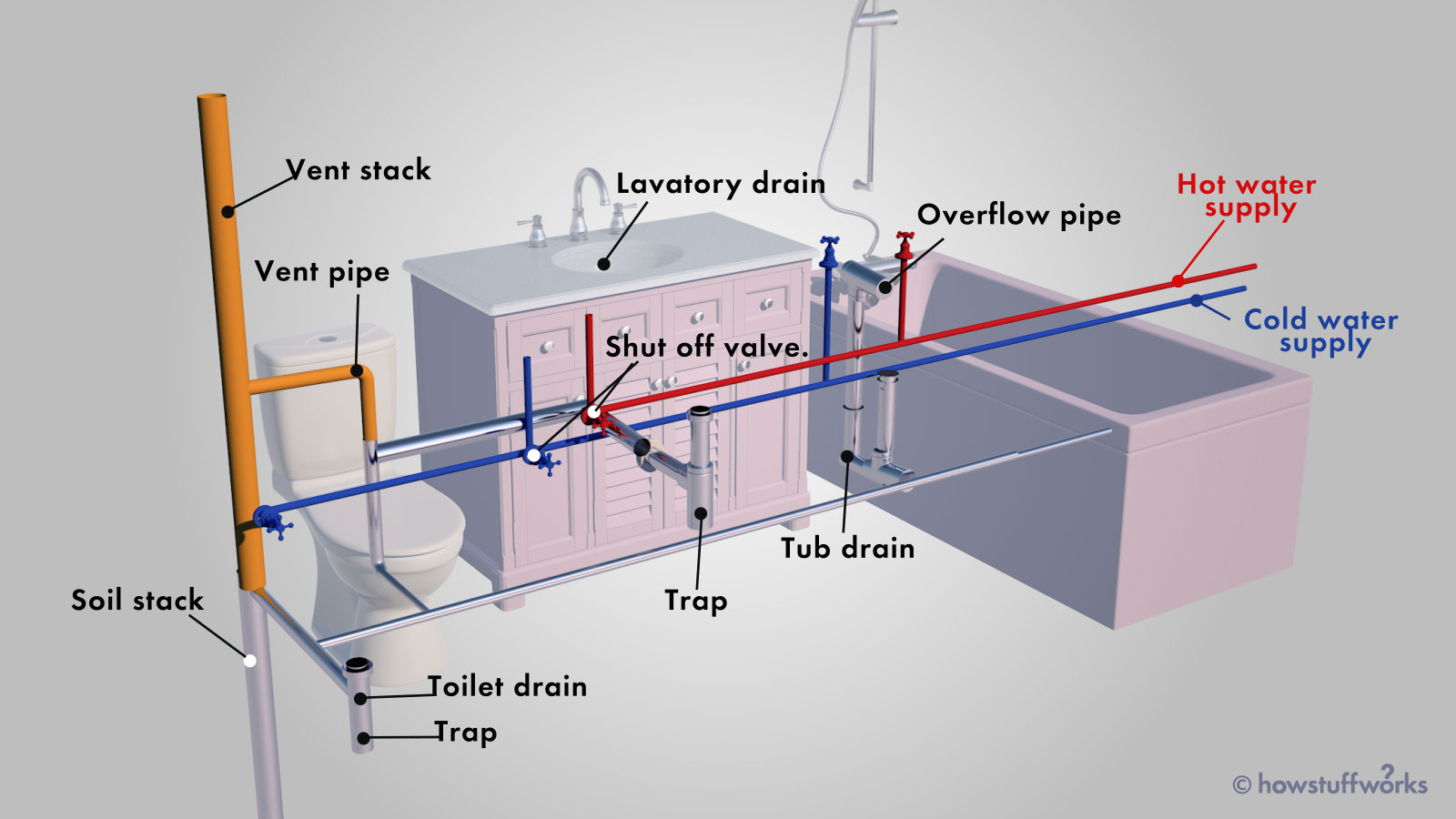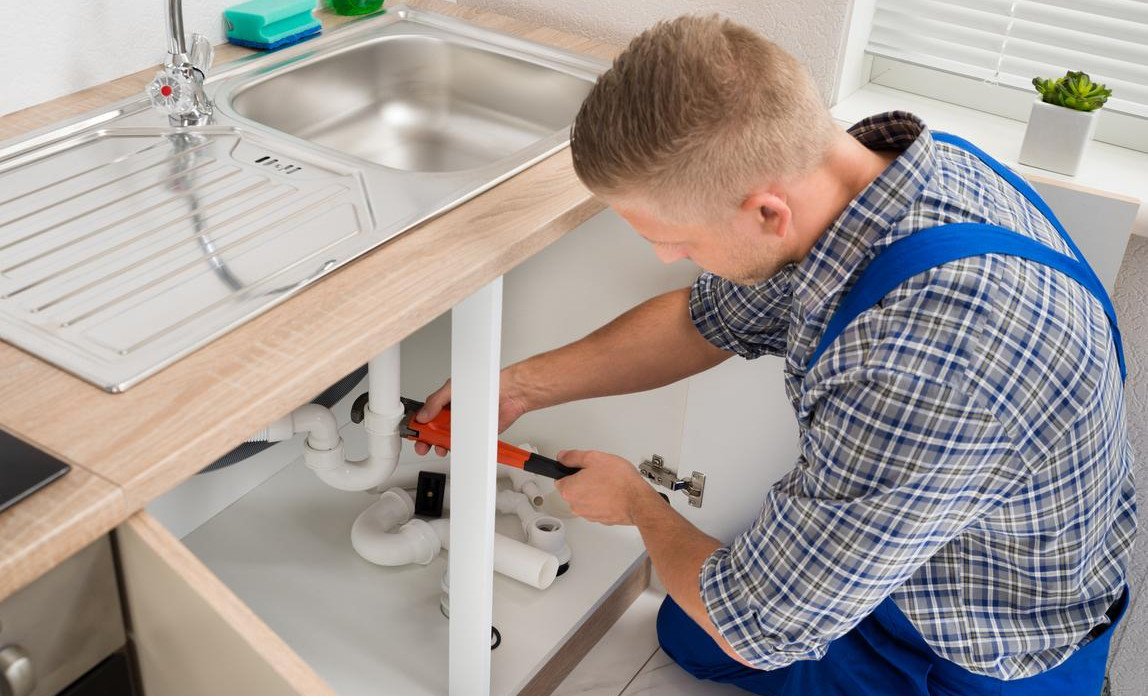How to Understand Your Property's Plumbing System Anatomy
How to Understand Your Property's Plumbing System Anatomy
Blog Article
What're your thoughts about Plumbing Installation 101: All You Need to Know?

Recognizing exactly how your home's pipes system works is crucial for every home owner. From delivering clean water for alcohol consumption, cooking, and showering to safely eliminating wastewater, a well-kept pipes system is vital for your family's health and wellness and comfort. In this thorough guide, we'll discover the intricate network that comprises your home's pipes and offer pointers on maintenance, upgrades, and taking care of usual problems.
Intro
Your home's plumbing system is greater than simply a network of pipelines; it's a complicated system that guarantees you have access to clean water and effective wastewater elimination. Understanding its parts and how they work together can assist you prevent expensive fixings and guarantee whatever runs smoothly.
Standard Components of a Plumbing System
Pipelines and Tubing
At the heart of your pipes system are the pipelines and tubing that bring water throughout your home. These can be made of different products such as copper, PVC, or PEX, each with its benefits in regards to longevity and cost-effectiveness.
Components: Sinks, Toilets, Showers, etc.
Fixtures like sinks, toilets, showers, and bath tubs are where water is used in your home. Comprehending just how these components attach to the plumbing system aids in diagnosing issues and intending upgrades.
Shutoffs and Shut-off Points
Shutoffs control the circulation of water in your pipes system. Shut-off shutoffs are essential during emergency situations or when you require to make repairs, permitting you to isolate parts of the system without disrupting water flow to the entire house.
Water System System
Key Water Line
The major water line connects your home to the municipal supply of water or a personal well. It's where water enters your home and is dispersed to numerous components.
Water Meter and Stress Regulatory Authority
The water meter measures your water usage, while a pressure regulator ensures that water moves at a safe pressure throughout your home's plumbing system, preventing damage to pipes and fixtures.
Cold Water vs. Hot Water Lines
Understanding the distinction between cold water lines, which supply water directly from the major, and warm water lines, which lug warmed water from the hot water heater, aids in repairing and preparing for upgrades.
Water drainage System
Drain Pipes Water Lines and Traps
Drain pipes lug wastewater far from sinks, showers, and bathrooms to the drain or sewage-disposal tank. Traps prevent sewage system gases from entering your home and additionally catch particles that might trigger blockages.
Ventilation Pipes
Air flow pipelines enable air into the water drainage system, protecting against suction that could slow down drainage and cause traps to empty. Correct air flow is essential for keeping the integrity of your pipes system.
Relevance of Appropriate Drainage
Ensuring appropriate drainage prevents back-ups and water damage. Routinely cleaning drains pipes and keeping catches can avoid pricey repair services and prolong the life of your plumbing system.
Water Furnace
Sorts Of Water Heaters
Water heaters can be tankless or typical tank-style. Tankless heating systems warm water on demand, while containers keep heated water for prompt use.
Upgrading Your Pipes System
Reasons for Upgrading
Updating to water-efficient fixtures or changing old pipes can boost water high quality, reduce water expenses, and increase the worth of your home.
Modern Plumbing Technologies and Their Advantages
Explore modern technologies like smart leakage detectors, water-saving bathrooms, and energy-efficient water heaters that can conserve money and lower environmental influence.
Expense Considerations and ROI
Determine the ahead of time expenses versus lasting cost savings when taking into consideration plumbing upgrades. Lots of upgrades pay for themselves with reduced energy bills and less repairs.
Just How Water Heaters Connect to the Pipes System
Understanding how hot water heater connect to both the cold water supply and warm water circulation lines assists in detecting problems like inadequate hot water or leaks.
Upkeep Tips for Water Heaters
Frequently purging your water heater to get rid of sediment, inspecting the temperature level settings, and checking for leakages can extend its life expectancy and enhance power performance.
Usual Pipes Issues
Leaks and Their Causes
Leaks can happen due to maturing pipes, loose fittings, or high water pressure. Attending to leakages immediately protects against water damages and mold growth.
Clogs and Blockages
Clogs in drains and bathrooms are typically triggered by purging non-flushable things or a build-up of oil and hair. Making use of drainpipe displays and bearing in mind what drops your drains pipes can protect against obstructions.
Indicators of Pipes Troubles to Expect
Low tide stress, sluggish drains pipes, foul odors, or uncommonly high water expenses are indications of prospective plumbing problems that should be addressed immediately.
Pipes Upkeep Tips
Normal Inspections and Checks
Set up yearly pipes inspections to capture problems early. Search for signs of leakages, corrosion, or mineral build-up in faucets and showerheads.
DIY Upkeep Tasks
Easy tasks like cleansing tap aerators, checking for toilet leakages utilizing color tablets, or shielding exposed pipelines in chilly environments can stop major pipes problems.
When to Call a Professional Plumbing
Know when a pipes concern needs specialist experience. Trying complex repair work without proper knowledge can bring about more damage and greater repair work expenses.
Tips for Lowering Water Usage
Easy practices like repairing leaks without delay, taking shorter showers, and running complete tons of laundry and recipes can save water and lower your utility costs.
Eco-Friendly Pipes Options
Consider lasting plumbing products like bamboo for flooring, which is durable and eco-friendly, or recycled glass for kitchen counters.
Emergency Preparedness
Actions to Take During a Pipes Emergency
Know where your shut-off shutoffs are located and just how to shut off the water in case of a burst pipeline or major leakage.
Significance of Having Emergency Situation Contacts Convenient
Keep get in touch with details for regional plumbers or emergency situation services easily offered for quick feedback during a pipes crisis.
Ecological Impact and Conservation
Water-Saving Components and Home Appliances
Mounting low-flow faucets, showerheads, and bathrooms can substantially reduce water use without sacrificing efficiency.
DIY Emergency Situation Fixes (When Suitable).
Temporary solutions like using air duct tape to patch a dripping pipe or positioning a container under a trickling faucet can minimize damages until an expert plumber shows up.
Verdict.
Comprehending the makeup of your home's plumbing system encourages you to maintain it successfully, conserving time and money on repair work. By complying with routine upkeep regimens and remaining educated concerning modern plumbing modern technologies, you can ensure your pipes system runs efficiently for several years ahead.
HOW YOUR PLUMBING SYSTEM WORKS
Which Pipes Do What?
Blue lines = fresh water supply entering the building Red lines = hot water supply entering the building Grey lines = pipes carrying waste away from the building and venting pipes carrying gases away from the building (through the roof) YOUR MAIN PLUMBING SYSTEMS
There are two main plumbing systems that support your home s basic plumbing needs one that brings clean water into your home, and one that sends dirty water away from your home. Connected to the toilet, bath, shower, and other faucets in your home, these two systems keep your water flowing in the right directions.
ACCESSING FRESH WATER
Fresh and clean water is brought into your home through the main water supply line . Filtered through one pipe, this water is pressured to flow into the various fixtures in your home at any given time.
This water can be sourced from a well located on your property, a pond or river (mostly cottages), or, as in most cases, from the city s municipal water treatment centre. However, it is important to note that water that is untreated, such as the water siphoned from ponds or rivers, may not be safe to drink. Personal water supplies always need to be treated for hardness and contaminants before consumed.
MUNICIPAL WATER SUPPLIES
Improve taste and odour Remove sediment Eliminate hardness Reduce chlorine COLD WATER SUPPLY VS. HOT WATER SUPPLY
Cold water flows into your home or building through the service line, which then distributes hot or cold water to your fixtures. This line is most commonly run through a central column that runs floor to floor. Hot water runs in short and straight pipes as the longer the pipeline, the more heat that will be lost in the transfer. Having shorter pipes also allows residents to access hot water more quickly.
WASTE WATER SYSTEM
Your wastewater system is divided into two parts pipes that send wastewater away from your home and venting pipes that send sewer gas away from your home. Sewage water travels through pipes that flush the water and waste towards local sewers that are operated and managed by your city or town. Most sewer systems rely on gravity to move the wastewater to where it needs to go.
The further away from your toilet or sink, the larger wastewater pipes become. This allows for waste to be disposed of from various parts of your home or business at once without pipe blockages. The angle and flow of these pipes are also essential for keeping your waste pipes clear of build up.
https://harrisplumbing.ca/how-your-home-plumbing-system-works/

I was made aware of that write-up about Plumbing Installation 101: All You Need to Know through an acquaintance on a different site. Sharing is good. Helping people is fun. I am grateful for your time. Revisit us soon.
Booking Page Report this page